Bad memory "frame." FW 189
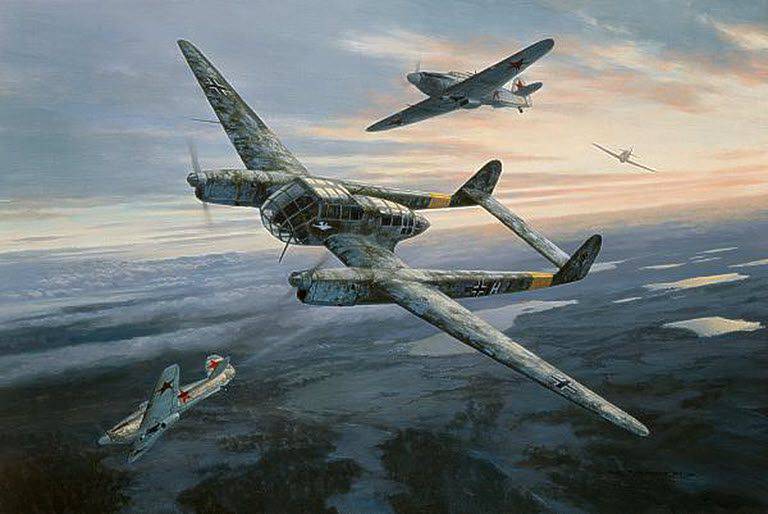
The FW 189, known to the general public as a “frame,” has undoubtedly become one of the symbols of the Luftwaffe of the past war. In the memoirs of the veterans of the Red Army, he appears very often - the infantrymen remember him as a dangerous forerunner of a quick raid or shelling, pilots - as a very difficult, tenacious air enemy. Omnipresent "frames" literally "hung" over positions, carrying out reconnaissance and adjustment. But at the same time, they were built much less than the no less famous fighters of the Messerschmitt Bf.109 or the Junkers bomber.
In February 1937, the Ministry aviation Germany prepared the requirements for a three-seater reconnaissance aircraft with a circular overview to replace the Hs 126. The answer to German industry was the single-engine asymmetric Blom and Foss BV 141, Arado Ag 198 and Fokke-Wulf FW 189. The latter had an almost completely glazed central a gondola (for which he earned the nickname "Eagle Owl"), two engines and a plumage mounted on the tail beams.
Officials from the Ministry of Aviation of Germany at first preferred the “Arado”, finding the other machines unacceptable (the “Arado” did not become serial due to poor handling and low flight data). Although the advantages of the FW 189 with its perfect overview for the crew were obvious from the very beginning. Moreover, the designers of the machine K. Tank and E. Kozel offered to use various nacelles on the FW 189, depending on the purpose of the aircraft: for direct air support of the ground forces, training, armored attack aircraft, anti-tank aircraft, as well as for passenger special transportation and transportation of light loads . "Filin" flew well at low altitudes and was well suited for reconnaissance. Its extensive glazing provided an ideal view, although, as follows from foreign sources, the front oblique panels distorted the image.
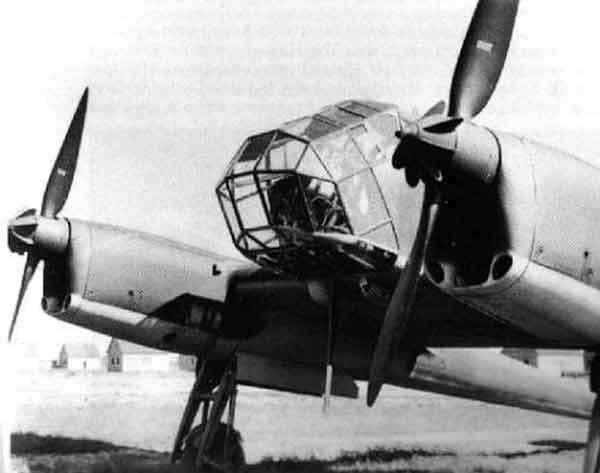
The first prototype of the FW 189V1 took off in the summer of 1938 of the year. The constructor commented positively on the car and called it "Oile" ("Owl"), although in the Luftwaffe it received the name "Wuhu" ("Owl"). The media dubbed him the "Flying Eye".
The most massive version of the aircraft was the FW 189A, which differed from the V1 prototype with screws and the design of the main landing gear. The V2, which took off in the summer of 1938, had a pair of MG 17 machine guns with a riflescope for shooting at the course and placed at the root of the wing, with one magazine MG 15 in the nose and middle parts of the gondola, as well as in the tail cone. On four wing holders, 50 kg bombs and aviation chemical devices could be hung.
Although by the beginning of the 1939 of the year, the FW 189A-0 had worked on the experimental machines, the Luftwaffe command was not in a hurry to adopt it, since the Hs 126 was completely controlled with the duties assigned to them. The only thing the company could do was to continue to work on other versions, and only in 1941, they decided to release ten pre-production A-0 machines. At the same time, it became obvious that Hs 126 did not meet the requirements of military campaigns in the West, and Focke-Wulf was ordered by an additional number of A-1 variant machines.
Positive feedback from the combat units accelerated the matter. In addition, the FW 189 quietly flew on one engine. Focke-Wulf quickly mastered the production of A-1 series aircraft, but the production lines were significantly overloaded, mainly with the release of the FW 190 fighter. It was necessary to attract the Czech factory "Aero", which in 1941 year released 151 FW 189, while the parent company - only 99.
It was expected that with the start of the war against the USSR, the need for air reconnaissance would also increase, so a significant part of the French aircraft industry was provided to Focke-Wulf. Production equipment has been transported to Merignac from Bremen. As a result, the release of scouts reached 20 aircraft per month.
On the "A-1" there was no bow gun and armament consisted of two MG 17 and a pair of MG 15. If necessary, the FW 189 could drop an 50-kg bomb from a dive or horizontal flight. The S 125 smoke instruments were standard equipment, but they were not used. In the gondola, the Rb 20 / 30 aerial camera was mounted, and the crew always had hand-held movie cameras.
In the middle of 1941, the launch of the FW 189A-2 began, with the MG 15 being replaced with a faster rate pairing with MG 81Z machine guns, which could provide up to 3600 shots per minute. The tail cone was turned by an electric drive. This made targeting easier. weaponsdefending the rear hemisphere.
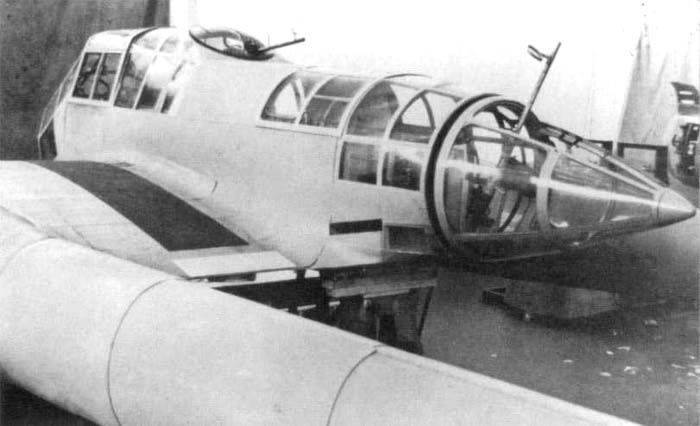
On the Soviet-German front, the FW 189 was called the “frame” for its distinctive look. It was possible to get close to the car when the trophy variant A-2 was examined in detail at the Air Force Institute (a little later, another FW 189 appeared at the Chkalovskaya airfield).
On the plane was a pair of inverted V-shaped air-cooled Argus As-410 A1 engines with power on take-off mode in 465 hp. These motors are easy to start even in the cold and were considered very reliable. For a quick replacement of engines provided for the removal of the power plant with a motor and hoods. The car had two fuel tanks of 222 each. They were protected and located in the beams behind the engine nacelles. Maslobaki, containing 19 l, were in the rear of the engines.
The two-spar wing with the back wall and working metal lining was the main strength element of the machine. The most interesting unit of reconnaissance was the central gondola, executed as a single unit with the center wing. It was firmly fastened with rivets to the spars of the center section. It housed the crew, equipment and weapon systems. During the production, the crew gondola was not changed from the V1 version until the last aircraft produced, with the exception of two experimental machines. Pilot's seat was greatly shifted to the left. Almost all flight navigation instruments were located on the same side. On the right and slightly behind on the rotating seat was a navigator-radio operator with an optical bomb-sight GV 219d. If necessary, he could fire from the dorsal machine-gun installation. On the tail end of the gondola on the mattress lay the gunner-flight mechanic. The nasal part of the gondola is almost entirely glazed with triplex-type flat glass.
The small arms of the aircraft included five 7,92-mm machine guns. The location of the firing points protected mainly the rear hemisphere of the FW 189. The front machine guns served primarily for shelling ground targets. An excellent survey from a scout reduced the likelihood of a sudden attack of fighters. The high maneuverability allowed on time to prepare for a defensive battle. With successful maneuvering, the enemy fighter could always be in the zone of the FW 189 defensive points. Aerodynamics scout allowed to perform turns at speeds of the order of 180-200 km / h. As a rule, the scout went out of battle, falling down in a spiral and moving on a shaving flight.
Our fighter pilots were recommended to attack the FW 189 from the front with a dive at an angle of 30-45 ° or at a lower angle of more than 45 °. Attacks should start from behind the clouds or from the sun. Unexpected for the "German" could be attacks from below, as it provided a disguise against the background of the earth's surface and hold down the maneuver of the aircraft for shaving flight. The scout's weak spot was the crew, which was practically not covered with armor from the front hemisphere. In the case of an attack from the rear hemisphere, it was desirable to hit the rear arrow, then the entire lower plane of the rear hemisphere was made unprotected.
The firepower of the Focke-Wulfe himself left much to be desired. In the initial period of the war, one MG 189 machine gun was mounted on the rear FW 17 lens mount, later replaced with a MG 81 pair. There were also two under each wing of the bomb ram, with electric locks for 50 kg bombs. Alternatively, two 100 kg bombs could be hung. The maximum bomb load did not exceed 200 kg.
The navigator's seat moved and rotated, which made it possible, without rising, to move backwards and, turning on 140-160 °, to fire from the top machine-gun installation. Due to the lack of a back on the seat, the navigator had to lean forward all the time, which was tiring in flight. The disadvantage of the cockpit was considered weak booking. But it could be heated, and to any desired temperature. Successful placement of the crew next to each other ensured good communication between them without STC and interchange. It was noted and thoughtful location of all the necessary flight equipment and weapons.
In their conclusions, the specialists of the Air Force Scientific Research Institute noted: “The two-beam scheme implemented on the 189 EF is one of the most successful schemes for the“ military reconnaissance and artillery spotter. " 189 not only fighters, but also attack aircraft and front-line bombers. "
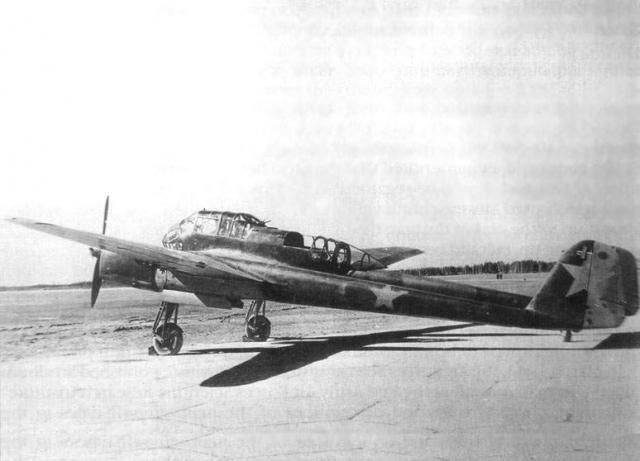
During the war years, aircraft factories also produced a number of training FW 189A-3 equipped with dual controls. In addition, several "А-О" and "А-1", have been modified to the version "А-3". Back in 1940, several "AO" were sent to the 9-th army squadron of the 2-th training and combat squadron, but before the 1942-th FW 189 was extremely rare on the fronts. Subsequently, the FW 189 entered the aviation units, including the Slovak and Hungarian Air Forces. In addition to these machines, the five-seater training FW 189В and the double-armored FW 189C attack aircraft with a close box gondola, which barely enough space for the pilot and the shooter sitting back to him, are known. Designed double-float seaplane Fw189D.
In winter, the first prototype of the 1938-1939 converted the armored pond into the FW type 189C and, having received the designation V1b, took off in the spring of the year 1939. The pilot had almost no review, he could not fire from on-board weapons. The shooter’s position was even worse. The handling of the V1b turned out to be low, and the flight-technical capabilities left much to be desired and things didn’t go further.
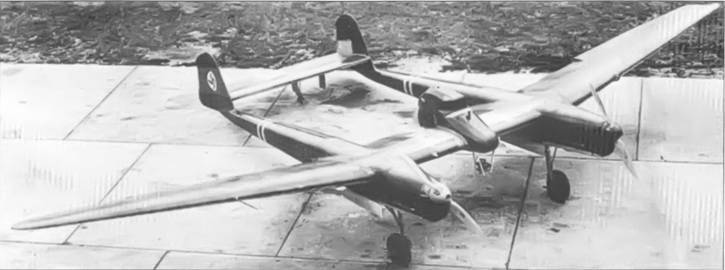
In the spring of 1940, the FW 189V6 with its upgraded engines and chassis from the FW 189F-0, with an improved armored crew nacelle and improved visibility, took to the air. Its armament included two MG FF cannons and four MG 17 machine guns, as well as an installation with a MG 81Z pair for firing back.
But the military chose Hs 129, the main advantage of which was a smaller geometrical size and cost. In the 1939-1940-ies, a plant in Bremen built three pre-production "B-O" and ten "B-1".
The latest production version of the FW 189-4 had enhanced armor protection and MG FF wing cannons. At the end of 1942, a small amount of "A-4" was released, intended for assault operations and reconnaissance aircraft with improved armor and armament from MG FF guns instead of MG17 machine guns. Total built 828 FW 189, including 293 - in Merignac and 337 - in Prague.
22 June 1941, there has never been a single FW 189 in the Luftwaffe combat units. "Rama" were sent to the Soviet front only for the winter. Despite the fact that the losses of Hs 126 were small in percentage terms (even smaller than those of the new Bf.109 and Ju 88), but the enormous scope of the Soviet front and the intensity of the fighting did their job - the fascist aviation lost more than a short time 80 Hs 126, including 43 were lost forever. In addition, the "Hensheli" were no longer produced, and FW 189 went into the reconnaissance squadrons.
A positive feature of the aircraft, identified during combat operation, was a unique stability, combined with good handling. Engines "Argus" perfectly start up and work steadily at all temperatures. However, the failure of one motor practically did not threaten the aircraft; "Frame" perfectly could continue the flight and on one engine. The vitality of the FW 189 was extremely high. Thanks to its excellent maneuverability, (achieved due to low wing loading), the scout was quite a difficult target, in addition, the "frame" well held a large number of hits of machine-gun bullets and small fragments. There is even a case when the FW 189 returned to its airfield after a ram.
On the sections of the main strikes of the fascist armies FW 189, our soldiers knew excellently. "Damned" frames, "remembered General FP Polynin," from dawn until dark, we plowed our skies, searching for targets to strike, following the movements of our troops. " And on the most intense sectors of the front, such as the Stalingrad bridgehead, the FW 189 literally “hung” over the positions of the Soviet troops. In particular, over Mamayev Kurgan “frames” appeared on 5-6 once a day with an interval of only 2-3 hours. As a rule, the departure of the scouts was accompanied by a subsequent raid of dive bombers.
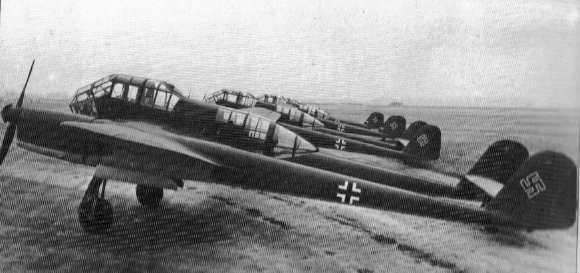
In the spring of 1943, the FW 189 tried out a new role for itself - counterguerrilla warfare. The leadership of the German army acknowledged the high efficiency of these vehicles during retaliatory operations in the rear of the actions of Army Group Center. However, after a few weeks, all the "frames" were again sent to the front to support Operation Citadel.
For Soviet pilots, the FW 189 aircraft and in the 1943 year were considered a difficult, but honorable trophy. Despite the good dodge "frames", the Soviet pilots still learned to shoot them down. General B.N. Eremin recalled: “In order to overthrow this plane, surely, it was necessary to fire at the cockpit. But with the surprising maneuverability of the“ frame ”, it was not easy to do it. And so it happened: I flashed one of the beams in a queue, I managed to open the eyes, but obviously it was necessary to literally cut the beam so that the "frame" fell ... "
FW 189 fought in North Africa, for which their power plants were equipped with dust filters. Two "A-1" converted into staff aircraft. Around 30, A-1 was transformed into night interceptors that were part of 100 and 5 squadrons of night fighters. Instead of reconnaissance equipment, they placed the FuG 212 C-1 radar with antennas in the bow, and the dorsal machine guns were replaced with MG 151 / 1 5 (sometimes they used MG 151 / 20 guns).
Despite the fact that As 410 was a good engine, the company continued to select more powerful engines. On a single FW 189E, designed in SNCASO, French star-shaped 700-powerful GR 14M 4 / 5 motors were installed. The FW 189F "A-2" modification with 600-strong engines As 411MA-1 was very popular.
Among the latest 17 machines made in 1944 in Bordeaux was the FW 189F-1. In the project "F-2" provided enhanced armor protection and electric drive mechanism for cleaning the chassis.
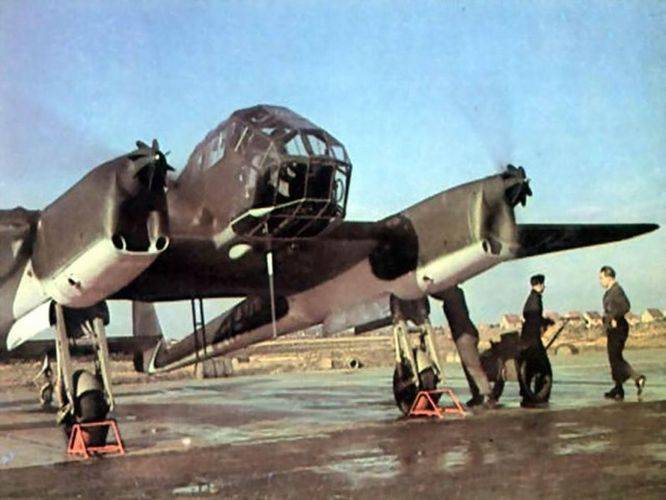
Sources:
Haruk A. Hateful "frame" Fw 189. M .: Collection, Yauza, EKSMO, 2011. C.15-31. 39-44.
Ivanov S. "The Flying Eye" of the Wehrmacht // War in the air. No.18. C.3-7, 9-11,
Haruk A. “Flying Eye” of the Luftwaffe // Aviation and Time. 2009. No.4. C. 4-15.
Safonov S. Eyed "Filin" // Wings of the Motherland.2002. No.8. 15-17.
Kotelnikov V., Khazanov D. Legendary "frame" // World of Aviation. 1994. No.1. C. 12-20.
Green William. Wings of the Luftwaffe (warplanes of the Third Reich). CH 2. M .: Publishing Department TsAGI, 1994. C. 126-131.
Information